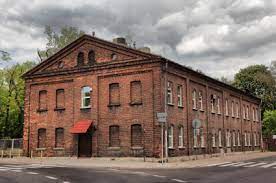In the fast-paced world of modern architecture, old brick buildings stand as silent witnesses to the past, each brick holding within it a story of craftsmanship, heritage, and history. These timeless structures have gracefully endured the trials of time, evoking a profound sense of nostalgia and enchantment that captivates the minds of countless admirers. In this blog post, we will delve into the rich legacy of old brick buildings, exploring their construction, significance, and the importance of preserving these architectural marvels.
Unearthing the Past: The History of Old Brick Buildings
When did the construction of old brick buildings begin?
Old brick buildings find their roots in ancient civilizations, where the use of bricks dates as far back as 7000 BC. However, it was during the Roman Empire that brick-making techniques flourished, paving the way for the widespread incorporation of bricks in construction practices. The rise of old brick buildings continued throughout the Middle Ages and into the Industrial Revolution, where bricks became a symbol of urban development and progress.
What makes old brick buildings unique in terms of construction?
Old brick buildings are renowned for their solid construction and timeless appeal. Bricks, typically made from clay or shale, offer exceptional durability and resistance to weathering. Mortar, a mixture of sand, water, and lime, binds the bricks together, forming sturdy load-bearing walls. The use of bricks also allows for intricate architectural detailing, enabling the creation of stunning facades and ornate designs.
What historical events have shaped old brick buildings?
Throughout history, various architectural styles have influenced the design of old brick buildings. From the Gothic cathedrals of Europe to the colonial structures in the Americas, bricks have been an integral part of diverse architectural movements. Additionally, the Industrial Revolution revolutionized brick production, leading to mass-produced bricks that shaped the skylines of growing cities.
The Enduring Significance of Old Brick Buildings
What cultural significance do old brick buildings hold?
Old brickes buildings hold immense cultural significance as they provide a tangible link to our past.
They mirror the expertise, artistry, and engineering prowess of eras long gone by. These buildings often serve as landmarks, representing the identity and character of a community. Preserving them helps foster a sense of pride and continuity for future generations.
How do old brickes buildings contribute to sustainable development?
Brickes, a natural and locally-sourced material, is eco-friendly and sustainable. The thermal mass of bricks helps regulate indoor temperatures, reducing the need for excessive heating or cooling. The longevity of old brickes buildings also means less construction waste and a lower environmental impact compared to modern construction materials.
Preservation: Safeguarding the Legacy
Why is preserving old brick buildings important?
Preserving old brickes buildings is essential to safeguard our architectural heritage. With urbanization and development, many historic structures face the threat of demolition. By conserving these buildings. We maintain a tangible link to our past and provide future generations with a glimpse into history.
Conclusion
Old brickes buildings epitomize the beauty of the past, encapsulating the rich tapestry of human history within their walls. From their ancient origins to their enduring significance today, these architectural wonders continue to captivate our hearts and minds. Conserving these heritage structures goes beyond mere bricks and mortar. It embodies the reverence for our cultural legacy and the transmission of our ancestors’ tales to the generations yet to come. By embracing technology and understanding the importance of preservation. We can ensure that these old brickes buildings stand tall for many more centuries to come.


